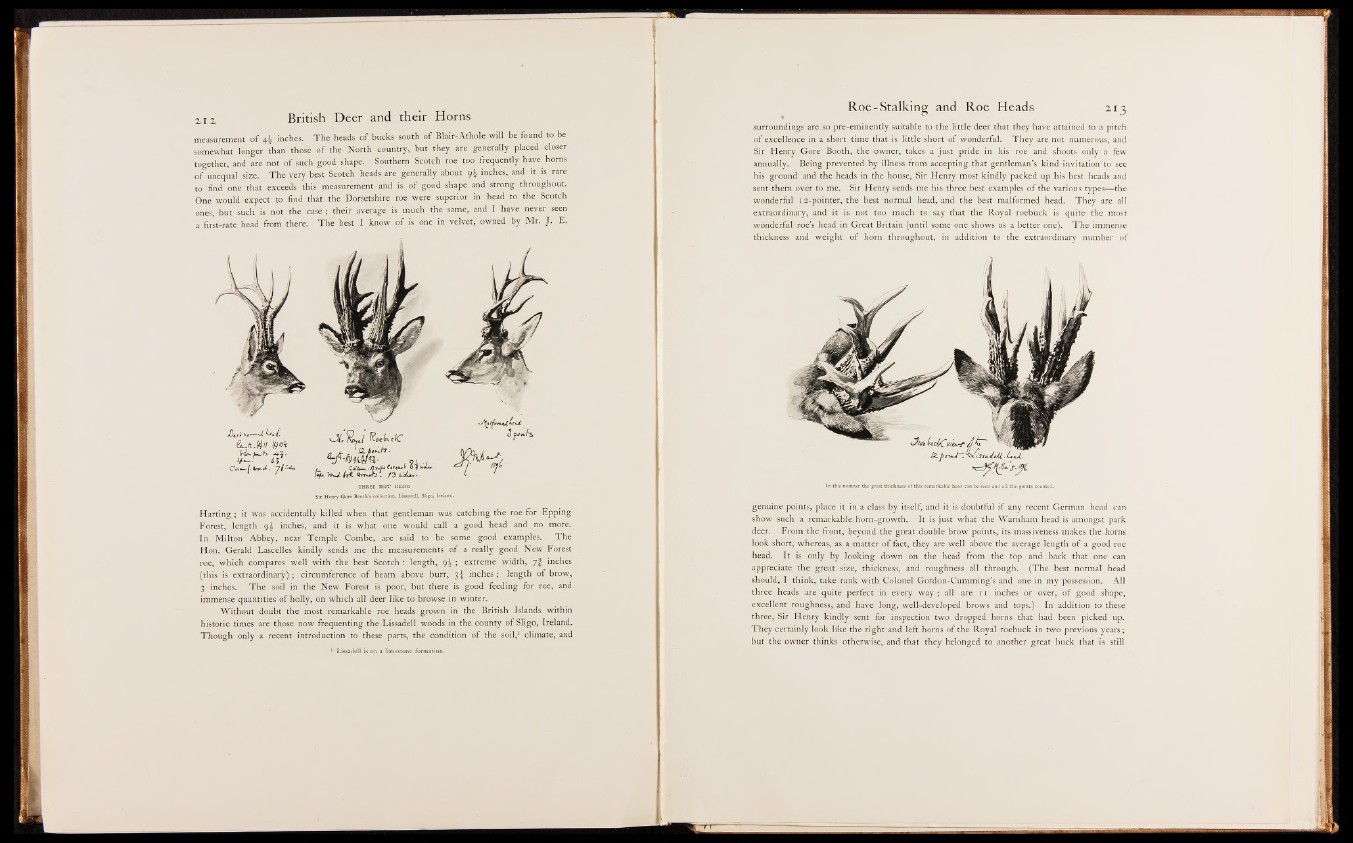
measurement of 4^ inches. The heads of bucks south o f Blair-Athole will be found to be
somewhat longer than those o f the North country, but they are generally placed closer
together, and are not o f such good shape. Southern Scotch roe too frequently have horns
o f unequal size. T h e very best Scotch heads are generally about 9^ inches, and it is rare
to find one that exceeds this measurement and is o f good shape and strong throughout.
One would expect to find that the Dorsetshire roe were superior in head to the Scotch
ones, but such is not the case ; their average is much the same, and I have never seen
a first-rate head from there. The best I know o f is one in velvet, owned by Mr. J. E.
Harting ; it was accidentally killed when that gentleman was catching the roe for Epping
Forest, length 9^ inches, and it is what one would call a good head and no more.
In Milton Abbey, near Temple Combe, are said to be some good examples. The
Hon. Gerald Lascelles kindly sends me the measurements o f a really good New Forest
roe, which compares well with the best Scotch : length, 9-^ ; extreme width, 7% inches
(this is extraordinary) ; circumference o f beam above burr, 3^ inches ; length o f brow,
3 inches. The- soil in the New Forest is poor, but there is good feeding for roe, and
immense quantities of holly, on which all deer like to browse in winter.
Without doubt the most remarkable roe heads grown in the British Islands within
historic times are those now frequenting the Lissadell woods in the county o f Sligo, Ireland.
Though only a recent introduction to these parts, the condition o f the soil,1 climate, and
surroundings are so pre-eminently suitable to the little deer that they have attained to a pitch
o f excellence in a short time that is little short of wonderful. They are not numerous, and
Sir Henry Gore Booth, the owner, takes a just pride in his roe and shoots only a few
annually. Being prevented by illness from accepting that gentleman’s kind invitation to see
his ground and the heads in the house, Sir Henry most kindly packed up his best heads and
sent them over to me. Sir Henry sends me his three best examples o f the various types— the
wonderful 12-pointer, the best normal head, and the best malformed head. They are all
extraordinary, and it is not too much to say that the Royal roebuck is quite the most
wonderful roe’s head in Great Britain (until some one shows us a better one). The immense
thickness and weight o f horn throughout, in addition to the extraordinary number of
/S, Ss* deM.. L, e j.
genuine points, place it in a class by itself, and it is doubtful i f any recent German head can
show such a remarkable horn-growth. It is just what the Warnham head is amongst park
deer. From the front, beyond the great double brow points, its massiveness makes the horns
look short, whereas, as a matter o f fact, they are well above the average length o f a good roe
head. It is only by looking down on the head from the top and back that one can
appreciate the great size, thickness, and roughness all through. (The best normal head
should, I think, take rank with Colonel Gordon-Cumming’s and one in my possession. All
three heads are quite perfect in every way ; all are 11 inches or over, o f good shape,
excellent roughness, and have long, well-developed brows and tops.) In addition to these
three, Sir Henry kindly sent for inspection two dropped horns that had been picked up.
They certainly look like the right and left horns of the Royal roebuck in two previous years;
but the owner thinks otherwise, and that they belonged to another great buck that is still